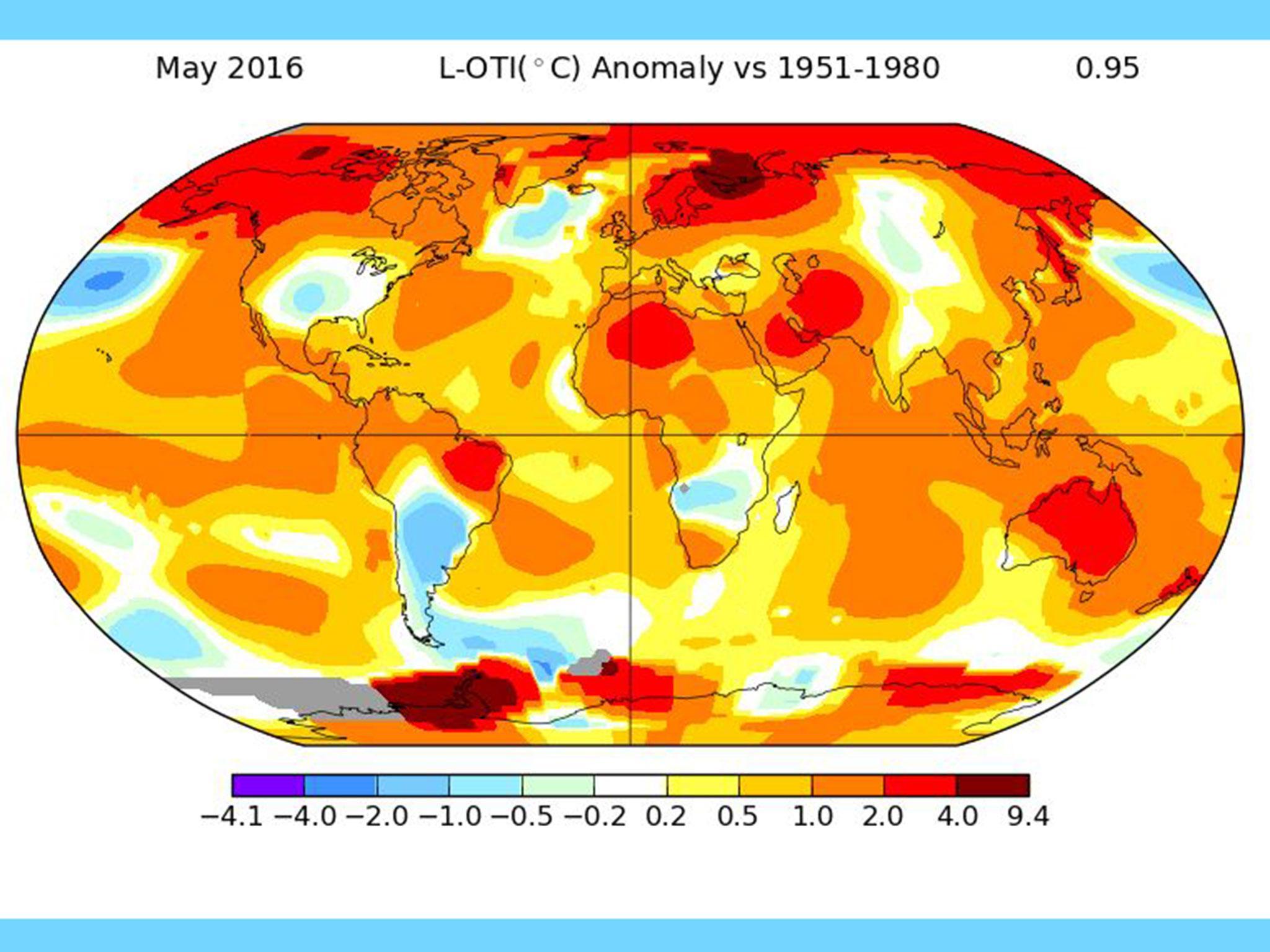May was hottest month on record, as carbon dioxide in Antarctica also reaches highest ever levels
'The state of the climate so far this year gives us much cause for alarm'

Temperatures in May were the hottest ever recorded, scientists have said, making “abnormal the new normal”.
Last month was the 13th in a row that temperatures have been recorded as above average for the time of year.
May also saw record rises in levels of carbon dioxide in Antarctica, the last region to be affected by high concentrations of the greenhouse gas.
This year is now the hottest on record, and it was also revealed that the northern hemisphere has experienced its hottest ever spring.
Global temperature records were broken across land and sea in May, according to data from NASA and the US National Oceanic and Atmospheric Administration (NOAA).
At 15.67C, temperatures were 0.87C more than the 20th century average of 14.8C.
Despite the El Niño weather system - which has now ended - strongly influencing global weather, scientists insist the underlying cause of the warming were greenhouse gases released into the atmosphere by humans.
“The state of the climate so far this year gives us much cause for alarm,” said David Carlson, Director of the World Climate Research Programme. “Exceptionally high temperatures. Ice melt rates in March and May that we don’t normally see until July. Once-in-a-generation rainfall events. The super El Niño is only partly to blame. Abnormal is the new normal.”
The Arctic has been particularly badly affected and sea ice has begun melting early. Snowfall across the northern hemisphere was described as “exceptionally low” by the World Meteorological Organisation. In Barrow, Alaska, the northernmost city in the US, the earliest snowmelt ever recorded was announced on 20 May by the NOAA, ten days earlier than the previous record, set in 2002. Usually, the snow begins to melt in June or July.
Mr Carlson said: “The rapid changes in the Arctic are of particular concern. What happens in the Arctic affects the rest of the globe. The question is - will the rate of change continue? Will it accelerate? We are in uncharted territory.”
Data for the southern hemisphere made equally grim reading. On 23 May, the NOAA reported carbon dioxide concentrations reached a symbolically significant 400 parts per million at the South Pole.
“The far southern hemisphere was the last place on earth where CO2 had not yet reached this mark,” said Pieter Tans, the lead scientist of NOAA's Global Greenhouse Gas Reference Network. “Global CO2 levels will not return to values below 400 ppm in our lifetimes and almost certainly for much longer.”
Human behaviour combined with El Niño caused this rise, according to scientists from the Met Office.

"The atmospheric carbon dioxide concentration is rising year-on-year due to human emissions, but this year it is getting an extra boost due to the recent El Niño event,” said Richard Betts, who led the Met Office research.
He continued: “This warms and dries tropical ecosystems, reducing their uptake of carbon and exacerbating forest fires. Since human emissions are now 25 per cent greater than in the last big El Niño in 1997/98, this all adds up to a record CO2 rise this year.”
Join our commenting forum
Join thought-provoking conversations, follow other Independent readers and see their replies
Comments
Bookmark popover
Removed from bookmarks